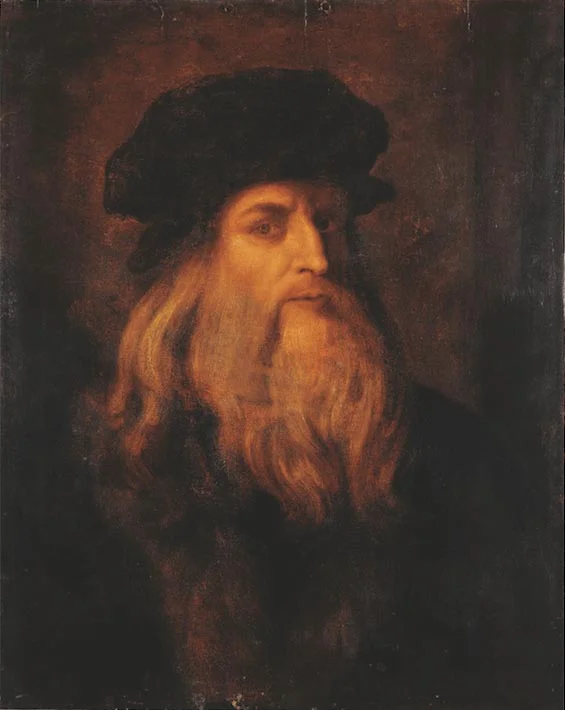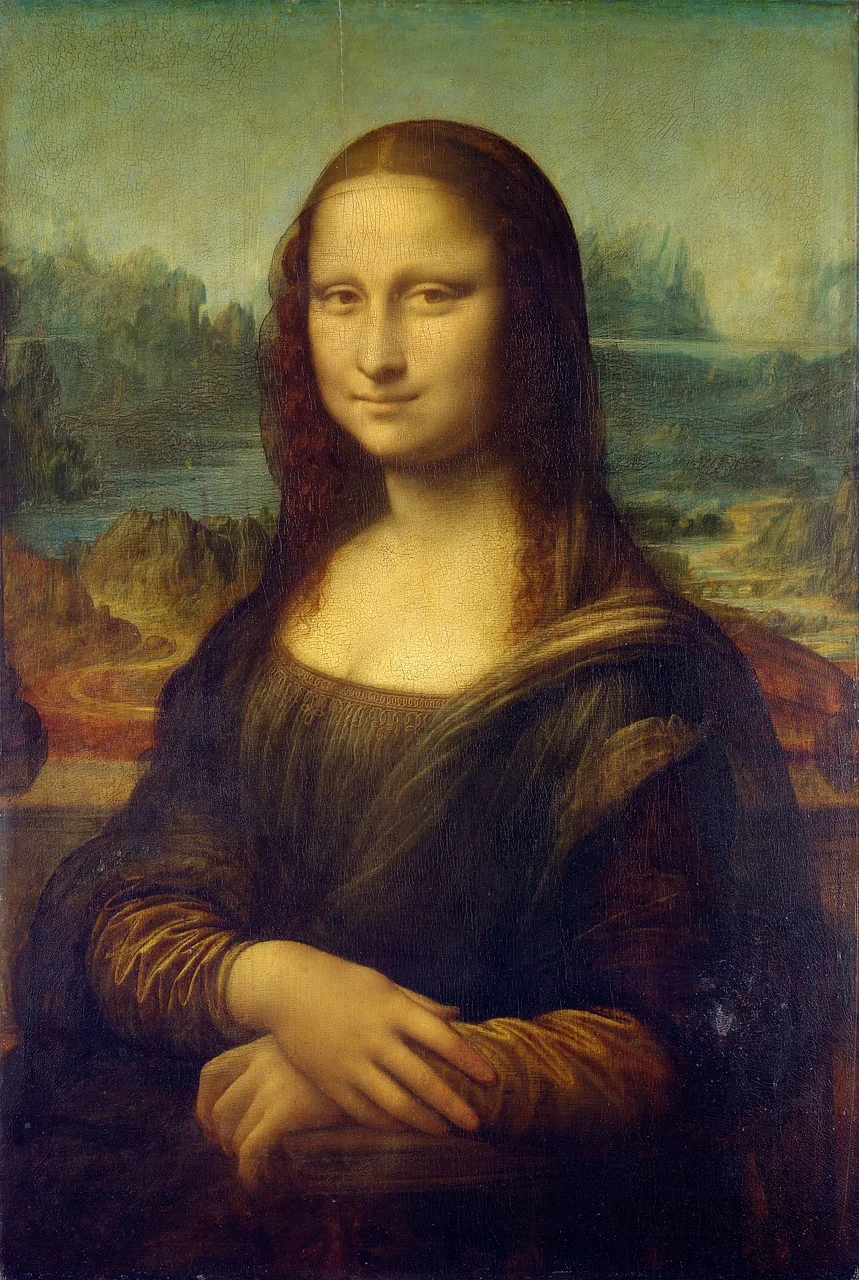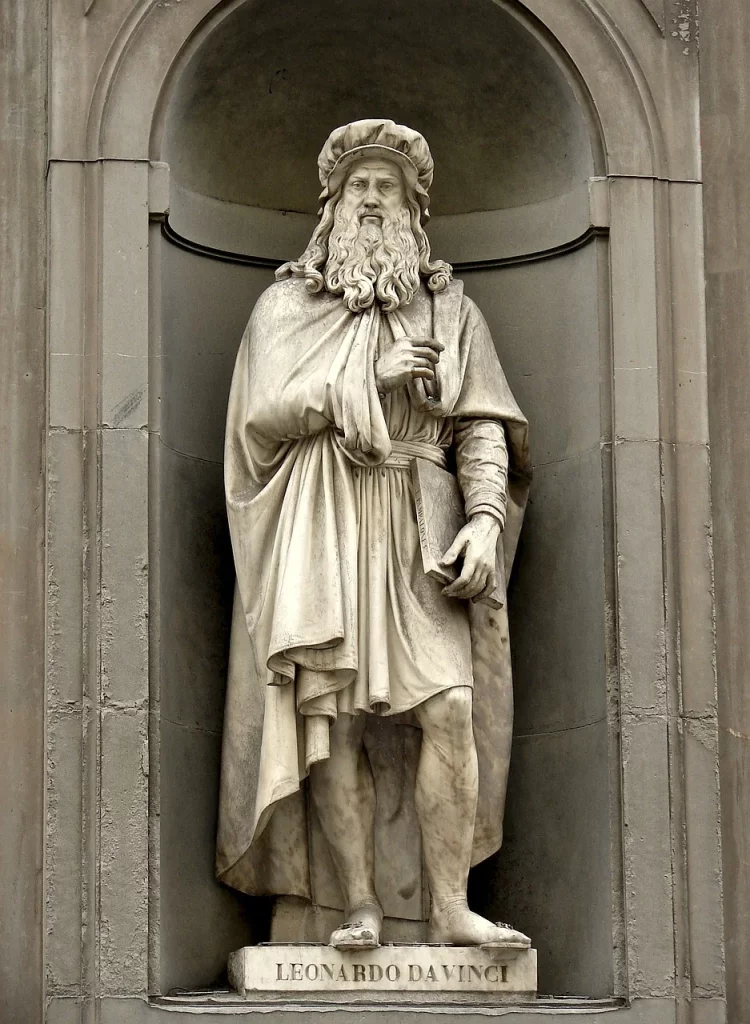Have you ever wondered about the mind that conceptualized flying machines centuries before the Wright Brothers? Leonardo da Vinci, a man far ahead of his time, continues to fascinate us with his extraordinary blend of art, science, and invention.
In this journey through these fascinating facts about Da Vinci, we’ll explore not just his famous paintings but the genius that made him a true Renaissance man. From his visionary inventions to his enigmatic personal life, prepare to uncover the layers of a man who redefined the boundaries of human creativity.
Leonardo da Vinci was a man who awoke too early in the darkness, while the others were all still asleep.
Sigmund Freud
Leonardo Da Vinci Facts
Embark on a journey through the life of Leonardo da Vinci, but read carefully; your understanding of these facts will be tested in the quiz that I created at the end of this article. Prove that you are a true connoisseur of da Vinci’s world.
- Leonardo da Vinci was born on April 15, 1452, in Vinci, Italy.
- He was an illegitimate child of a notary, Ser Piero, and a peasant woman, Caterina.
- Da Vinci was primarily self-educated, receiving only a basic formal education in reading, writing, and math.
- He started his apprenticeship at age 14 with the artist Verrocchio in Florence.
- Leonardo’s first known and dated work is a pen-and-ink drawing of the Arno Valley, created on August 5, 1473.
- He was a vegetarian and known for his love and compassion for animals.
- Leonardo was skilled in mirror writing, a technique where the text appears normal when reflected in a mirror.
- He was not only an artist but also a scientist, mathematician, engineer, inventor, anatomist, and writer.
- Leonardo never married and had no children.
- One of his most famous paintings, the Mona Lisa, is thought to have been a portrait of Lisa Gherardini.
- He was fascinated by the flight of birds and studied their structure to design flying machines.
- Leonardo’s “Last Supper” used experimental pigments directly on dry plaster and began deteriorating soon after completion.
- Da Vinci’s notebooks contain over 7,000 pages of his observations and drawings.

- He created a detailed map of Imola to improve its defense system, showcasing his skill in cartography.
- Leonardo often left his works unfinished, like the famous painting “Adoration of the Magi.”
- He was commissioned to make a mechanical lion that could walk and open its chest to reveal a bouquet of lilies.
- Leonardo was a musician and invented various musical instruments.
- His anatomical studies included the first accurate depiction of a human spine.
- Leonardo’s design for a helical air screw is considered an early concept for the helicopter.
- He was accused of sodomy in 1476, but the charges were later dropped.
- Leonardo’s work on human anatomy was not published in his lifetime and remained unknown for centuries.
- He spent his final years in France, under the patronage of King Francis I.
- Leonardo died on May 2, 1519, in Amboise, France.
- His famous work, The Vitruvian Man, demonstrates the blend of art and science and the ideal human proportions.
- He conceptualized a tank, a machine gun, a parachute, and a flying ship, among other inventions.
- Leonardo’s interest in human anatomy led him to perform dissections on human corpses.
- His fascination with water led to designs for various water-related contraptions, like a water wheel and a syphon.
- Leonardo’s “Salvator Mundi” sold for over $450 million in 2017, making it the most expensive painting ever sold.

- He believed that sight was the most important sense and the key to knowledge.
- Leonardo’s work on hydraulics proposed using water to power machines and cities.
- His painting “Ginevra de’ Benci” is the only artwork by Leonardo in the Americas.
- Da Vinci often procrastinated, leading to tensions with his patrons.
- His study of fossils led him to understand that the Earth was much older than previously believed.
- Leonardo was a pacifist, despite his designs for military machines.
- He created a 3D map of Chiana Valley in Tuscany, which was a significant achievement for that era.
- Leonardo’s “The Baptism of Christ” was painted together with his master Verrocchio.
- His botanical studies are less known but they showcase his deep understanding of nature.
- Leonardo left many cryptic notes and puzzles in his notebooks, which continue to fascinate researchers.

- He was known for his sharp sense of humor and often made jokes or puns.
- Leonardo’s “Saint John the Baptist” showcases his skill in creating soft light transitions.
- His design for a rotating bridge was practical and could be quickly assembled for military purposes.
- Leonardo’s “Lady with an Ermine” was one of the first portraits to depict a natural environment.
- He believed in the unity of man and nature, which influenced many of his works.
- Leonardo’s anatomical drawings included studies of the human heart, which were incredibly accurate.
- His concept of the “ideal city” included sanitation facilities, which was revolutionary for his time.
- Leonardo’s study of optics led to the development of the camera obscura phenomenon.
- Despite his fame, only about 15 of his paintings have survived.
- He was ambidextrous, capable of writing with one hand and drawing with the other simultaneously.
- Leonardo’s “Anatomical Manuscript A” contains over 240 detailed drawings and 13,000 words of notes.
- His work, although not always understood in his time, profoundly influenced the Renaissance and later periods.
Leonardo Da Vinci Myths

Having explored a good amount of Da Vinci facts, we now move on to the section where we are about to uncover the truth behind some popular myths about him.
- Da Vinci was Primarily a Painter
Although Leonardo da Vinci is best known for his paintings like the Mona Lisa and The Last Supper, he was much more than just a painter. Da Vinci was a true polymath, excelling in areas such as engineering, anatomy, architecture, and science. His notebooks are filled with inventions, scientific observations, and anatomical studies, showcasing his broad range of interests and talents. - Da Vinci’s Inventions Were Mostly Functional
While he had a brilliant mind and designed various machines and devices, many of his inventions were not practical or ahead of their time. Some were conceptual ideas, and others were too complex to be constructed with the technology available during his era. - Da Vinci Was a Lonely, Solitary Genius
Contrary to the image of a reclusive genius, Leonardo da Vinci was known to be sociable and collaborated with other artists and thinkers of his time. He worked in various workshops and courts, engaging with patrons, apprentices, and contemporaries. His life in Renaissance Italy was far from isolated. - The Mona Lisa is Famous Because of Its Perfection
The Mona Lisa is indeed a masterpiece, but its fame is not solely due to its artistic perfection. Factors such as its theft in 1911, the public fascination with Da Vinci’s techniques, and its enigmatic qualities contributed significantly to its iconic status. - All of Da Vinci’s Works Have Been Discovered
The exact number of Leonardo da Vinci’s works is still unknown, and some may still be undiscovered or lost. Over the centuries, many of his works have been attributed, reattributed, or remain subjects of debate among art historians. The full extent of his artistic and scientific legacy may still hold surprises.
No products found.
Leonardo Da Vinci Quotes

Leonardo da Vinci, a name synonymous with innovation and creativity, has been a source of awe through the centuries. The following quotes offer a glimpse into the profound impact of his work and thoughts.
Simplicity is the ultimate sophistication.
Leonardo da Vinci
Often attributed to Leonardo himself, this quote reflects his belief in the elegance and power of simplicity.
As a well-spent day brings happy sleep, so life well used brings happy death.
Leonardo da Vinci
This quote by Leonardo highlights his philosophical view on life and death, equating a well-lived life with a peaceful acceptance of death.
Leonardo da Vinci is the quintessential Renaissance man, a master of both art and science.
Walter Isaacson
Walter Isaacson, a biographer of Leonardo, celebrates him as the epitome of the Renaissance, excelling in both artistic and scientific pursuits.
I have offended God and mankind because my work didn’t reach the quality of Leonardo da Vinci.
Michelangelo
Michelangelo, a contemporary and sometimes rival of Leonardo, expresses his feeling of inadequacy compared to Leonardo’s genius.
Leonardo’s mind and personality seem to us superhuman, while the man himself mysterious and remote.
Kenneth Clark
Kenneth Clark, an art historian, remarks on the almost superhuman intellect and enigmatic personality of Leonardo, emphasizing his distance from ordinary understanding.
Leonardo Da Vinci FAQ

As we transition from the inspiring quotes of Leonardo Da Vinci, we approach the final section before the quiz. Please read the following FAQs carefully to deepen your understanding and succeed.
- When was Leonardo da Vinci Born?
Leonardo da Vinci was born on April 15, 1452, in Vinci, a small town in the region of Florence, Italy. His birth marked the beginning of a life that would profoundly impact art and science. - What is Leonardo da Vinci Famous For?
He is renowned as a polymath, excelling in various fields like painting, sculpture, architecture, science, music, mathematics, engineering, literature, anatomy, geology, astronomy, botany, writing, history, and cartography. However, he is most famous for his paintings, such as the Mona Lisa and The Last Supper, which are among the most influential and recognized artworks in the world. - Who Were Leonardo Da Vinci’s Parents?
Leonardo’s parents were not married to each other. His father was Piero da Vinci, a respected notary, and his mother was Caterina, a peasant woman. Despite his illegitimate birth, Leonardo was raised by his father in Florence and received a formal education in Latin, geometry, and mathematics. - Was Leonardo Da Vinci a Scientist?
Yes, Leonardo da Vinci was indeed a scientist, though he is often more celebrated for his artistic achievements. His scientific investigations were pioneering for his time. He studied topics ranging from anatomy, where he made detailed drawings of the human body, to engineering, where he conceptualized flying machines, tanks, and solar power. His scientific notebooks are filled with observations, theories, and sketches that display a deep understanding of and curiosity about the natural world. - How Did Leonardo Da Vinci Influence the Renaissance?
He is often considered the epitome of the Renaissance Man due to his diverse talents and contributions across multiple disciplines. He greatly influenced the Renaissance, a period of great cultural and intellectual growth, through his artworks, scientific discoveries, and innovative designs.
No products found.
Leonardo Da Vinci Trivia

Welcome to the Leonardo da Vinci quiz! Be warned; if you fail to answer correctly, you might just find yourself teleported into one of his mysterious paintings. Mona Lisa could use some company!
Conclusion
In closing, our journey through the life and legacy of Leonardo da Vinci leaves us in awe of his unparalleled genius. From his iconic artworks like the Mona Lisa to his visionary inventions, Da Vinci transcended the boundaries of art and science, embodying the true spirit of the Renaissance.
His life reminds us that curiosity and relentless pursuit of knowledge can lead to timeless contributions to humanity.
As you reflect on Da Vinci’s story, think about this: How might his blend of artistic creativity and scientific inquiry inspire your own approach to challenges and learning? Let me know in the comments.
16 Sources Used For This ArticleThe Curious Mind of Leonardo da Vinci – Medium
Leonardo Da Vinci – RedFox London
Leonardo da Vinci – Biography
Leonardo da vinci; 564 years after his birth. – Zombie Resident
Leonardo Da Vinci – Encyclopedia
30 Best Leonardo Da Vinci Quotes – Bookey
Your guide to Leonardo da Vinci – History Extra
Leonardo da Vinci – Biography
Leonardo da Vinci – Britannica
Leonardo da Vinci (1452-1519) – Stories Preschool
Leonardo da Vinci Quotes – Leonardo Inventions
Leonardo da Vinci – the universal man – Osho News
The Da Vinci Principle — Habits of a Brilliant Polymath – Hive
Leonardo da Vinci The Unlikely Genius – Online Lessons
I was here – Rude But Good



2 Comments
Have this in mind. His robot lion is something that worked. It was 500lbs and the French kings kept it in the throne room for over 150-200 years.
Did some research because of your comment and found some really interesting things. Thanks a lot for pointing out.